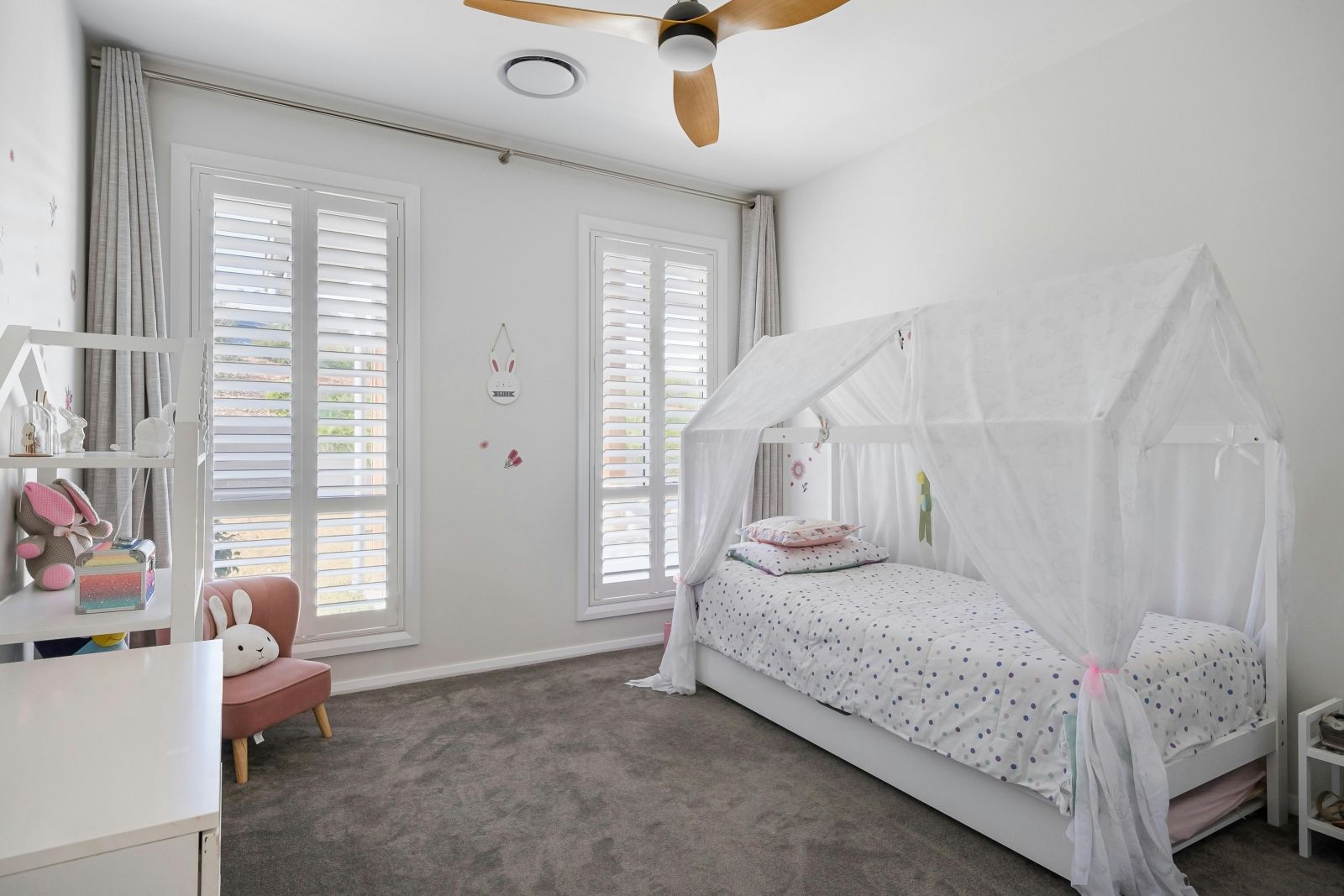Once upon a dream: How to help children sleep soundly in a new home
Moving house is an exciting time. Especially for your kids. So, it’s no wonder settling down to sleep in a new home can be tricky for your little one. No matter how many sheep they count! That’s why we caught up with Carlene Rotblat – Founder and Gentle Sleep Consultant at Sweet Dreamers Sleep Consulting – for her advice on creating the perfect sleep routine for your children in a new environment.
Nurturing their development: Why sleep matters for children
We can all relate to the zombie shuffle to the coffee maker the morning after a bad sleep. Not to mention the midday espresso and 3 pm Red Bull to get through the rest of the day.
But that type of caffeine intake is a bit extreme, even for us. So for children, it’s not even an option. They need a good night’s rest – because they’ll struggle to focus without it.
‘Developmentally, so much happens for children while they sleep,’ Carlene explains. ‘So if they aren’t getting adequate sleep, they don’t function adequately the next day.
‘Their emotions will often take over.’
We’re talking bad moods. Reduced appetites. And physical, mental, emotional and social flow-on effects.
The numbers game: How much sleep your child needs
‘If your child is under 5 years old, they should get around 11-12 hours of sleep a night,’ Carlene says. ‘But it depends on their age. The younger the child, the more times they’ll need to wake up.’
The key to keeping these wakeups under control? Routine.
‘Children have natural melatonin peaks throughout the day, and they occur at roughly the same times,’ Carlene reveals. ‘So if your child doesn’t keep a consistent sleep routine, they’ll miss these peaks.’
Another thing to remember is that children feel most vulnerable when they’re asleep, so emotional care matters. This means if your child has a big lifestyle change on the horizon – like moving into a new home – it’s best to talk to them about it.
‘You don’t have to wait until the car is packed before you start preparing them,’ Carlene reassures.

Packing boxes: Before the big move
A wonderful way to start the moving process is to make it exciting for your child.
‘Try getting out a calendar and start crossing out the days until the move. It’ll build anticipation. But of course, this only works for older children!’ Carlene chuckles.
The closer the move, the richer the chaos. Kids get underfoot, and sticking an iPad in their hands is tempting. But it shouldn’t always be the first thing you reach for.
‘Low-effort activities like wooden blocks or puzzles are an easy way to keep your little ones busy while you pack,’ Carlene suggests. ‘But on the other hand, I don’t think screens are that bad. Kids can learn a lot from screens; it’s all about balance.’
So, if it’s the middle of the day and you need to distract your child so you can finally tackle the pantry pack-up, the TV or iPad is an obvious solution. But if it’s within two hours of bedtime, perhaps a toy is a better call.
‘Most importantly, parents shouldn’t put pressure on themselves,’ Carlene reassures. ‘If they’re stressed, the child will feel it too.’
Same same, but different: Setting up their bedroom
While a full re-design of your child’s room may be tempting, Carlene advises against it.
‘Make their new room as similar to their old room as possible,’ she says. ‘Children feel most comfortable in familiar environments.’
But having something to look forward to can be helpful for older kids.
‘Maybe a bigger bed or a new soft toy?’ Carlene suggests. ‘Talk about the special thing waiting for your child when it’s time to sleep. They’ll be excited!
‘And simple things like new bedsheets or glow-in-the-dark stickers can build that enthusiasm.’

Feeling safe in the dark: Off to dreamland
As a sleep consultant, Carlene is all for dark environments.
‘Children get distracted if there’s light in the room,’ she explains. ‘It’s one of the most important things to consider.’
It can be surprisingly easy to create a dark bedroom.
‘If you're renting, use black garbage bags. They’re cheap and won’t damage the property,’ Carlene says. ‘And try not to use nightlights. They can cast shadows, which can scare children.’
But again, it’s all about the routine. So whatever your child’s used to, mimic that in their new sleep environment.
‘And if they love essential oils, a gentle massage using a few drops of lavender with jojoba can help them nod off to sleep,’ Carlene adds.
Bumps in the night: When strange sounds call
‘Creaky doors are a big one,’ Carlene recalls. ‘But creaking floorboards are trickier. The best thing to do is explain your home’s sounds to your child so their imagination won’t run wild.’
Carlene experienced this with her young daughter.
‘She was scared of thunder,’ Carlene remembers. ‘So, I told her the clouds were clapping, and just like that, her fear was gone,’ she says with a smile.
And while a quiet sleep environment is important, white noise machines can be a big help to kids who are used to more sound.
Comfy under the covers: Getting the temp right
‘Make sure your children wear the right clothing to sleep,’ Carlene shares. ‘A good rule of thumb is to dress children aged 2 and below in one more layer than you would yourself. But older children are fine with a doona.’
Appliances like oil heaters are simple and safe for warming a colder house.
And for babies? Carlene is a big believer in using sleeping bags with a clear Thermal Overall Grade (TOG).
‘These bags make it easier to maintain a consistent body temperature for your child, keeping them warm enough while they sleep without covering their faces.’
And the room itself? Keep it between 18 and 22°C.
Hopping out of bed: When they wander
So, your child had a bad dream and wants to crawl into bed with you.
‘It can be tempting,’ Carlene understands. ‘I know many parents struggle with this, but bringing them into your bed will only make it harder for them to adjust to their new environment.’
The best thing to do is take them back to their room.
‘Sit next to them and hold their hand,’ Carlene says. ‘Tell them they’re safe. Reinforce that calm feeling. And stay with them until they drift back off.’

The morning breaks: It’s a brave new world
It’s a new day, and we’re waking up – when you say so!
‘I love walking into their room and saying, ‘Good morning! It’s time to wake up,’ Carlene cheers. But for some, a new home is too exciting.
‘Try to instil healthy wake-up habits with things like a funny alarm. Quacking ducks is always popular, so are toddler sleep-training clocks.’
But whatever you do, don’t let them sleep in – especially after a rough night. It can reinforce those nightly wakes and further interrupt their healthy sleep cycle. And remember: a gentle sleep routine will make children and parents happy.